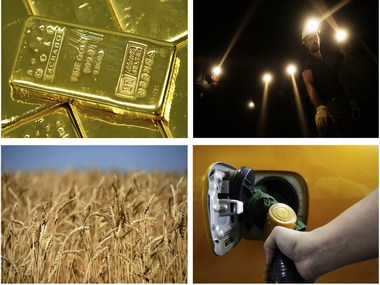India’s economy grew at a higher-than-expected 5.5 percent in the quarter ending in June, against analysts’ forecasts of 5.3 percent, government data showed on Friday.
The manufacturing sector grew an annual 0.2 percent during the quarter, while farm output rose 2.9 percent, the data showed. In the quarter ending in March economic growth was at 5.3 percent.
Leif Eskesen, Chief Economist For India and ASEAN at HSBC said that “Going forward, we expect a gradual recovery in growth during the current fiscal year ending in March 2013, but this recovery is contingent on structural reforms that will alleviate supply side constraints and improve the investment cycle. It will also depend on the stabilisation of the global economy.”
[caption id=“attachment_438218” align=“alignleft” width=“380”]  Reuters[/caption]
“We expect full-year growth at 6.2 percent. We believe today’s data will add to the Reserve Bank of India’s reluctance to cut interest rate.”
On possibility of a rate-cut, Sujan Hajra, Chief Economist at Anand Rathi Securities said, “We don’t think that today’s growth number will lead to any change in the Reserve Bank of India’s monetary policy stance. It is unlikely that there will be a rate cut before the fourth quarter of the current fiscal year ending in March 2013.
“Our growth estimate for the current fiscal year is 5.8 percent. We are seeing that slowdown in the manufacturing sector is percolating to the services sector. However, in the third and fourth quarter of the fiscal, there may be some improvement in industrial activity.”
Shakti Satapathy of AK Capital added ,“The number is primarily a reflection of upside growth captured in construction & financing, insurance, real estate & business services. However, a sustainable growth in the coming quarters would largely depend up on well defined policy reforms.
“With higher than expected number, the RBI might stick to its inflation reining principle. With most of the negativities discounted by the bond market, the northward pressure in the Indian bond yields seems restricted with 10-year benchmark to hover around 8.20 percent - 8.25 percent up till next policy meet.”
While Rupa Rege Nitsure, Chief Economist at Bank of Baroda said, “Even if the GDP growth number is at 5.5 percent-much above the market expectations, there is no doubt that the country has fallen into a low growth trap due to a continuing fall in fresh investments. The combination of high growth in construction activity and low growth in manufacturing is worrisome from the perspective of macro-economic stability.”
“This number should not have any major implications for the RBI policy, their stance will remain the same”.
A Prasanna, economist at ICICI Securities said, “The industry numbers look much more higher than the IIP (index of industrial production) numbers, especially because these numbers track each other closely. But on balance this is a better number. I would think RBI would be reasonably happy with this number as it doesn’t look as bad as they would have feared in July and most likely will keep rates unchanged next month.”
With regards to inflation being sticky, Radhika Rao, economist at Forecast PTE said, “Sense of relief was palpable in the domestic financial markets after the stronger-than-expected Q2 GDP print. Whilst an upside surprise at 5.5 percent, the pace of growth is undeniably below potential and validates the need for the government to address sluggishness in investment and external sector activity.
“Inflation remains sticky for the same reason that GDP is underweather - supply side constraints and structural bottlenecks. Thereby RBI action, we reckon, will be dictated by when the government gets its act together on the fiscal situation and ease structural constraints. We nonetheless still see reason to hold on to 50 bps rate cut by year-end, albeit might be deferred to Q1 2013.”
Reuters


)
)
)
)
)
)
)
)
)



